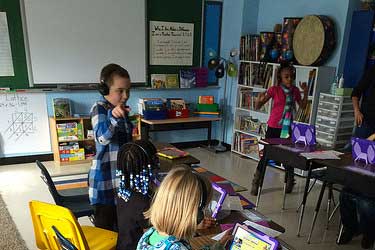
Students today are surrounded by digital technology at home and in school, and are asked to learn in an “anytime, anywhere” environment. It’s a lot to take on. But it’s also the way of the future, and with the advent of 1:1 classrooms, the trend is for students to have direct access to the tools and opportunities they need to grow intellectually.

1:1 Classroom
Students Learn Better
According to Pearson’s 2014 Student Mobile Device Survey, only 16 percent of students attend schools that provide each student with a tablet. That’s just 1 student in 6, but the tide is rising. Of teachers who completed the survey, 71 percent believe students perform better in class when they have a personal computing device. Among students, 81 percent say that using a tablet allows them to learn in a way that’s best for them. These statistics support the notion that 1:1 classrooms gradually will become a part of every school’s pedagogy.
Different Modes of Teaching
As the focus shifts to each child having a personal device, the mode of instruction must shift as well. 1:1 classrooms are only as good as the teachers who run them. Teaching with a tablet is different than with a traditional textbook, and educators must tailor their instruction accordingly. Students are submitting work online, are able to locate information quickly, and may share projects with their peers. 1:1 classrooms are transforming student learning, and educators committed to supporting their implementation are key to the process.
Access for All
Installing 1:1 devices in the classroom takes both capital and bandwidth. A New York school is preparing for 1:1 classrooms by making sure all its students have Internet access before giving them devices. Learning happens both in the classroom and at home, and verifying that the kids can get online at home is a necessary first step. To families without such access, the school offered 3G and 4G wireless devices. Other schools can take this route to ensure students can continue learning when not at school.
Bottom Line
As schools make the transition, teachers and administrators need to remember that the classroom is about students fostering relationships with their contemporaries. One educator was emphatic: “Although the personalization of a student experience in a 1:1 environment is powerful, it’s important that students don’t lose the necessary moments of collaboration and critical thinking that come from working together with their peers.” This is what it takes to prepare students for the “big picture of life.”
Have some insight into 1:1 classrooms? Please leave your thoughts in the comments section.
